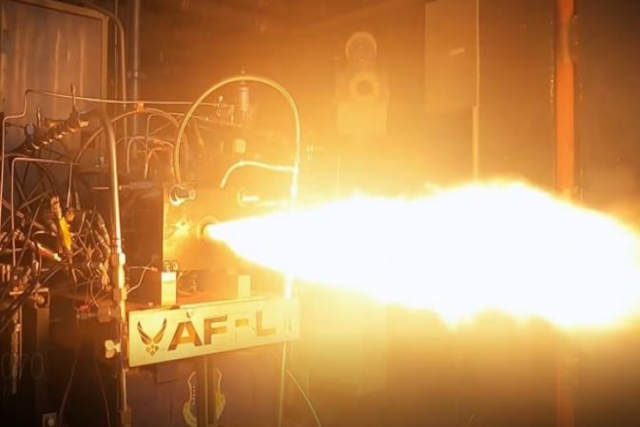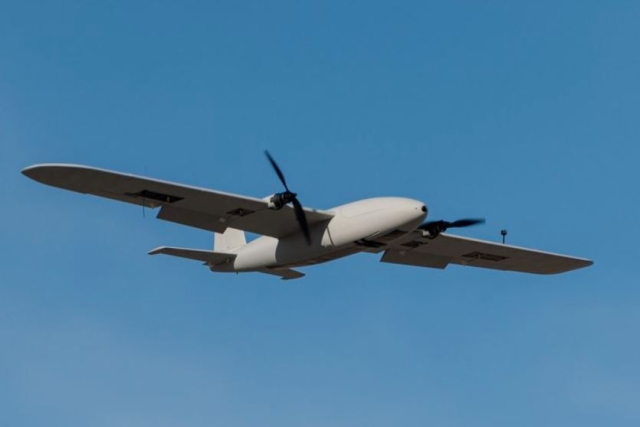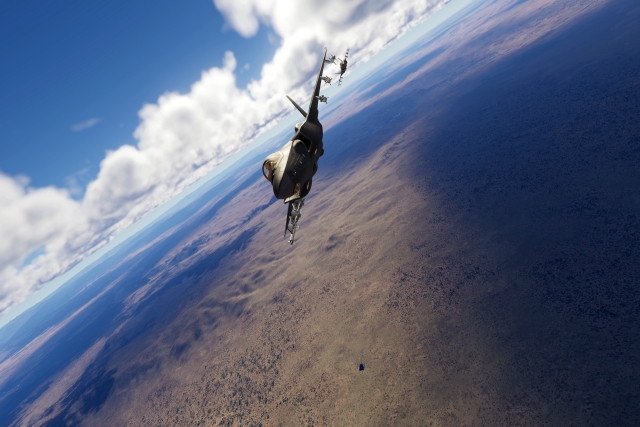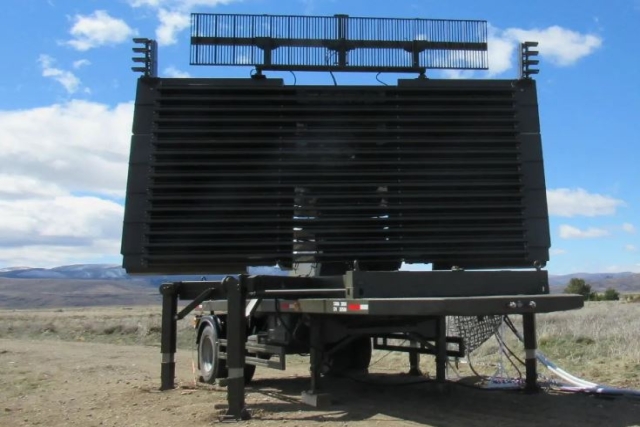U.S. AFRL Develops First Ever 3D Printed Rocket Engine
DED is an additive manufacturing process where metal powder is injected into high-power laser beams under controlled atmospheric conditions.

The U.S. Air Force Research Laboratory (AFRL), Rocket Propulsion Division, has conducted a hot-fire test of the first-ever rocket-engine thrust chamber manufactured using laser powder directed energy deposition (DED) additive manufacturing.
"AFRL’s investments in early advanced manufacturing techniques enable us to explore corners of the design space for rocket engines and facilitate faster design turnover cycles from a concept on a whiteboard to test and evaluation in the field," said Dr. Javier Urzay, Chief of the Combustion Devices Branch.
DED is an additive manufacturing process in which the device injects metal powder into focused beams of high-power laser in highly controlled atmospheric conditions. "It provides the largest build box volume for thruster hardware to date, capable of printing seven-foot-tall parts. This build box volume is much larger than that obtainable with techniques like the laser powder bed fusion, or LPBF, process. In addition, DED enables an order of magnitude less investment in powder and less material waste. Engineers can also realize alloy blending and transitions in real time for multi-alloy builds to exploit the strength, weight, and performance gains of next-generation superalloys," said Urzay.
"These unique capabilities allow us to tackle complex engine designs requiring fewer iterations and leveraging shape optimization, lightweight materials, advanced metal alloys, and composites, and rapid manufacturing," Urzay added.
The AFRL Rocket Propulsion Division, a component of the Aerospace Systems Directorate, is working alongside the U.S. space industry to embed these advanced additive manufacturing processes into robust digital engineering environments.
Additive manufacturing closely aligns with the transition from traditional ways of manufacturing rocket engine hardware to automated manufacturing processes fed by digital environments involving artificial intelligence, machine learning, digital twins, 3D volumetric scanners, and computer-aided design (CAD).
The multifaceted nature of the digital environment is necessary to manage the printers that produce lightweight thrust chambers, manifolds, injectors, pressure vessels, valves, and turbomachinery blades with 3D shapes and internal features that are not easily achievable using traditional methods.
AFRL is addressing the unique challenges of producing materials that can withstand the harsh environments in which rocket engines must perform.
AFRL experts combine decades of rocket combustion chamber experience with insights into the challenges and opportunities of these new manufacturing techniques and maintain close collaborations with several external organizations that bring unique skills to the table.
The AFRL Rocket Propulsion Division continues to work on novel techniques for additive manufacturing with the goal of increasing capacity in both liquid rocket engines and solid rocket motors.













